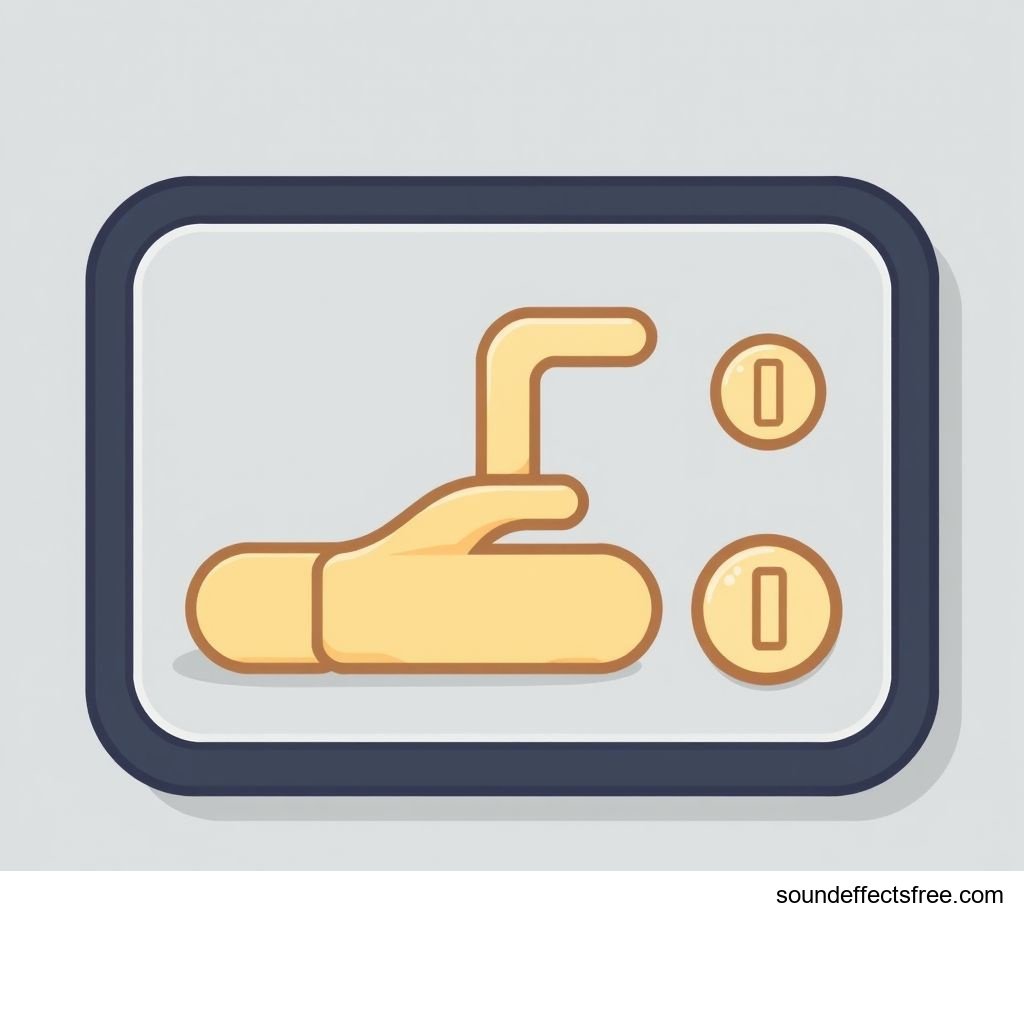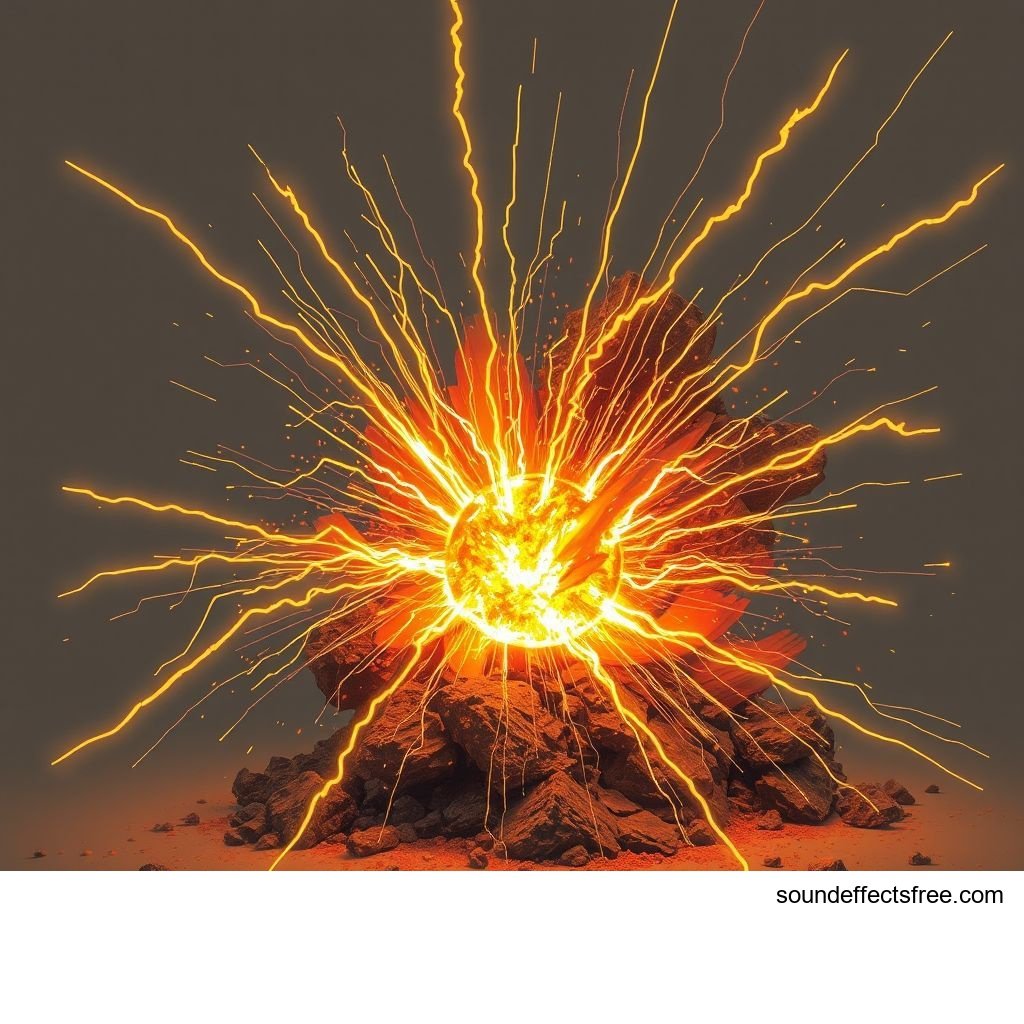Magic Impact: Elemental Dissipation Sound Design
Crafting the perfect Magic Impact sound is crucial for any immersive experience. It defines the weight and consequence of a spell or ability. This article explores the intricate process of creating dynamic magical sound effects, from the initial powerful hit to the final energy dissipation. Understanding these elements elevates your audio design, bringing fantasy worlds to life with compelling sound.
Applications in Media
Magic Impact sounds are vital across various media. They inform the audience about critical in-game events. From video games to films, strong audio cues enhance narrative flow and player feedback. A well-designed Magic Impact can convey power, element, and consequence.
Industry-Specific Uses
In video games, a distinct Magic Impact tells players their spell landed. It signifies success or failure. For movies and TV, it adds cinematic punch to supernatural abilities. Animations also benefit, giving life to fantastical powers. Each medium demands precise timing and distinct character for its Magic Impact. Think about a spell hit from a firebolt versus an ice shard. The audio should convey this difference instantly. Professional sound designers meticulously craft these moments.
Creative Techniques
Designers use various techniques for impactful Magic Impact sounds. Layering different elements creates complexity. A sharp initial transient might be followed by a resonant body. The final stages involve the crucial energy dissipation. This extends the impact's presence. Adding unique textures helps define the magic's source. Is it arcane, elemental, or divine? Each fantasy effect needs its own sonic signature.
Technical Analysis
Understanding the technical aspects is key to effective sound design. Magic Impact sounds are more than just a boom. They involve carefully shaped waveforms and precise frequency management. Analyzing these components helps craft superior audio.
Waveform Characteristics
The waveform of a Magic Impact often starts with a sharp attack. This is the initial spell hit. It then moves into a body phase, where the sound sustains or evolves. Finally, a decay phase leads to energy dissipation. The shape of this decay determines the perceived power and lingering presence. A fast, abrupt decay suggests a contained impact. A long, swirling decay implies a broad, sweeping fantasy effect.
Frequency Profile
Frequency is critical for a convincing Magic Impact. Low frequencies provide weight and rumble. Mid-range frequencies carry the core character and punch. High frequencies add sizzle, sparkle, or detail. A bright Magic Impact might have prominent high-end. A deep, heavy impact will lean on the low-end. Careful EQ ensures clarity and prevents muddiness. Mastering the frequency profile makes your Magic Impact truly shine. This also contributes to the sense of powerful decay.
Production Tips
Creating high-quality Magic Impact sounds requires specific production methods. Attention to detail in recording and editing is paramount. The right software tools streamline the entire process. These tips help you achieve professional results.
Recording & Editing
Source material is vital for a unique Magic Impact. Record real-world sounds like whip cracks, metal clangs, or glass shatters. These provide realistic textures. Synthesized elements add fantastical qualities. Combine these elements in a digital audio workstation (DAW). Precision editing is crucial. Trim silence, adjust fades, and clean up noise. Loop key sections for energy dissipation tails. This fine-tuning refines every spell hit.
Software Tools
Many software tools assist in creating a dynamic Magic Impact. DAWs like Pro Tools, Reaper, or Ableton Live offer comprehensive editing. Plugin suites from Izotope or FabFilter provide advanced EQ and compression. Specialized sound design tools like Serum or Massive create unique synth layers. These tools enable complex layering and precise manipulation. Leveraging them unlocks immense creative potential for your fantasy effect needs.
Creative Implementation
Beyond the technical, creative implementation brings Magic Impact to life. Layering different sounds creates depth. Spatial effects place the impact within the scene. These techniques transform a simple sound into an immersive experience.
Layering Methods
Layering is the cornerstone of complex sound design. Combine a sharp transient for the Magic Impact start. Add a sustained element for the spell's core. Blend in atmospheric textures for energy dissipation. Use different sound types: organic, synthetic, and percussive. Each layer contributes to the final powerful decay. Experiment with pitch shifting and time stretching. This builds a rich and detailed Magic Impact.
Spatial Effects
Spatialization places your Magic Impact within the 3D soundscape. Reverb creates a sense of space, from a small room to a vast cavern. Delay effects can make the impact echo or shimmer. Panning moves the sound across the stereo field. For games, directional audio cues are essential. They inform the player of the spell hit origin. Proper spatialization enhances realism and immersion for any fantasy effect.
Sound Pack Integration
High-quality sound packs offer ready-to-use assets. Integrating them efficiently improves workflow. A good sound pack provides a cohesive collection. This makes your Magic Impact design consistent.
Using with Other Sounds
A dedicated Magic Impact sound pack ensures consistency. The sounds within a pack are designed to complement each other. Combine a specific Magic Impact with pre-designed UI sounds or ambient loops. This creates a unified audio experience. For instance, a fiery Magic Impact might pair perfectly with a burning ambience. This streamlines the production of complex soundscapes. It ensures your energy dissipation blends seamlessly.
Complete Collection
For comprehensive audio solutions, explore a full sound pack. These collections offer a wide range of assets. They often include variations for different Magic Impact types. Discover diverse spell hit options and various powerful decay profiles. A complete collection supports all your fantasy effect needs. It provides a solid foundation for any project. Get the full sound pack for comprehensive audio solutions. You can also explore Related Magic Impact sounds and even specific sounds like UI Confirm Tap to broaden your library. For more professional tools, check out Pro Sound Effects.
FAQ Section
Q1: What makes a good Magic Impact sound?
A1: A good Magic Impact sound has a clear transient, a distinct body, and a well-defined energy dissipation tail. It should convey power and intent.
Q2: How can I create a unique Magic Impact for my project?
A2: Start with unique source recordings. Layer different sound elements. Experiment with synthesis and process them creatively. Focus on a clear spell hit.
Q3: What is "energy dissipation" in sound design?
A3: Energy dissipation refers to the decay phase of a sound. It's the trailing end where the initial Magic Impact fades, often with lingering resonances or echoes. This contributes to the powerful decay.
Q4: Are sound packs helpful for Magic Impact creation?
A4: Yes, sound packs are very helpful. They provide professionally designed assets. These can be used as-is or layered to create new Magic Impact variations. They offer a strong base for any fantasy effect.
Q5: How important is frequency shaping for a spell hit?
A5: Frequency shaping is extremely important. It defines the character of the spell hit. Proper EQ ensures clarity, punch, and the desired tonal qualities of your Magic Impact.





